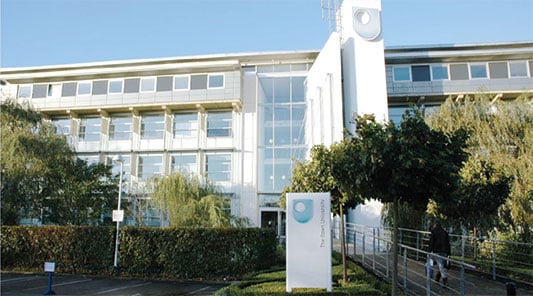The Open University


We had some ambitious requirements for a new networked storage platform, and the Quantum QXS hybrid storage series met them all. No other solution within the price band could offer the performance and storage density of their 2.5” drivebased systems.

Systems & Development Manager, Knowledge Media Institute, The Open University

Knowledge Media Institute Relies On QXS Hybrid Storage For Storage Demands
The Knowledge Media Institute (KMi) at The Open University performs research on future Internet technologies, multimedia and information systems, new media systems, and semantic web and knowledge services. It is expanding rapidly, and so are its storage requirements.
“Our existing SAN was proving difficult to expand,” explains Paul Alexander, systems and development manager for IT services at KMi. "In addition to capacity limits, we were also faced with license fees to expand each configuration with additional JBODs. We needed to find a new platform that would allow easy expansion plus deliver high performance with storage density, as data center space is always at a premium.”
“The ability to freely mix drive types to create a tiered architecture was also important,” explains Alexander. “We knew that our storage system requirements were ambitious, and we really didn’t expect to meet all of our parameters within our budget. However, we contacted our long-standing storage and virtualization partner, NCE, who proposed the Quantum hybrid storage series as the ideal candidate.”
Establishing High-performance Virtualized Infrastructure
Paul evaluated the Quantum QXS-324, an 8GB FC networked RAID array based on 2.5-inch drive technology.
“We didn’t realize that a 24-drive 2U chassis using 2.5-inch small form factor drives were available in the general IT channel market until we met the Quantum QXS hybrid storage series,” recalls Alexander. “The ability to freely mix drive types and expand up to 288TB using 3TB SATA drives really made this an ideal platform to future-proof our SAN.”
The data workload characteristics at KMi vary considerably between projects, so the QXS storage’s ability to mix drive types, including SAS, SATA, and SSD, has proved invaluable to the team.
“Very often, we have HPC requirements where the high-performance 2.5-inch SAS drives running over our Fibre Channel SAN deliver the performance we need. However, most research projects have a three-year active life and a five-year data archive requirement, so we can utilize lower cost bulk SATA storage for this purpose,” explains Alexander.
Virtualization is used extensively at KMi, so the full VMware certification of the QXS series offers peace of mind, and its small form factor (SFF) 2.5-inch drives provide a significant advantage in performance density.
Providing Flexibility
KMi also has the option of expanding each configuration using 3.5-inch drives, which will support the largest capacity SATA drives.
“The massive flexibility of the QXS hybrid storage systems is a great asset. We can mix drive types and sizes and the modular design of the systems means that we can upgrade our RAID controllers in the future, but maintain access to all of our existing data with maximum reuse of our investments. Many competitive offerings we considered called for a completely new infrastructure when moving up the chain in terms of performance or features,” says Alexander.
Accommodating a Vast Range of Workloads
Very often, KMi projects require HPC resources where a direct physical connection to the SAN and nonvirtualized compute resources are essential.
“We use the QXS-324 arrays extensively for our HPC projects, and the storage infrastructure has never been the bottleneck. Our SAN is 4GB FC right now—but when we do move to 8GB, the QXS hybrid storage systems will be ready to take advantage of the increased bandwidth. At the other end of the spectrum, we have clients who just need access to a web server with light traffic or development tools. Here we maximize our hardware utilization through virtualization,” explains Alexander.
“Quantum QXS hybrid storage has been a winner for us on many fronts and will hopefully accommodate our data needs as we continue to expand.”


